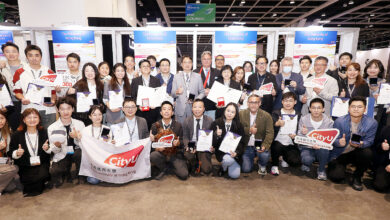Nature-inspired pressure sensing technology aims to transform healthcare and surgical robots
NUS researchers take a leaf out of nature’s book to develop ‘eAir’ — an aero-elastic sensor that revolutionises the way pressure is detected

Researchers at the National University of Singapore (NUS) have developed a novel aero-elastic pressure sensor, called ‘eAir’. This technology can be applied to minimally-invasive surgeries and implantable sensors by directly addressing the challenges associated with existing pressure sensors.
The eAir sensor promises increased precision and reliability across medical applications. It can potentially transform laparoscopic surgeries by enabling tactile feedback for surgeons, allowing more precise manipulation of patient tissues. In addition, the sensor can improve patient experiences by offering a less invasive means of monitoring intracranial pressure (ICP), a key health metric for individuals with neurological conditions.
Led by Associate Professor Benjamin Tee from the NUS College of Design and Engineering and NUS Institute for Health Innovation & Technology, the research team’s findings were recently published in scientific journal Nature Materials on 17 August 2023.
From lotus leaf to laboratory: Harnessing nature’s design
Conventional pressure sensors frequently struggle with accuracy. They have trouble delivering consistent readings, often returning varying results when the same pressure is applied repeatedly and can overlook subtle changes in pressure — all of which can lead to significant errors. They are also typically made from stiff and mechanically inflexible materials.
To address these challenges in pressure sensing, the NUS team drew inspiration from a phenomenon known as the ‘lotus leaf effect’ — a unique natural phenomenon where water droplets effortlessly roll off the leaf’s surface, made possible by its minuscule, water-repelling structures. Mimicking this effect, the team has engineered a pressure sensor designed to significantly improve the sensing performance.
“The sensor, akin to a miniature ‘capacity meter’, can detect minute pressure changes — mirroring the sensitivity of a lotus leaf to the extremely light touch of a water droplet,” explained Assoc Prof Tee.
Employing an innovative ‘air spring’ design, the eAir sensor houses a trapped layer of air, forming an air-liquid interface upon contact with the sensor’s liquid. As external pressure increases, this air layer compresses. A surface treatment results in a frictionless movement of the interface within the sensor, triggering a change in electrical signals that accurately reflects the exerted pressure. Using this design, the natural water-repelling capabilities of the lotus leaf have been reimagined as a simple yet elegant pressure-sensing tool.
The eAir devices can be made relatively small – at a few millimetres in size – and this is comparable to existing pressure sensors.
Find out more : NUS news




